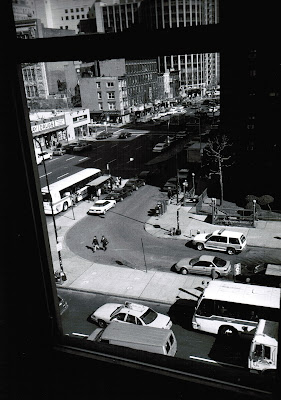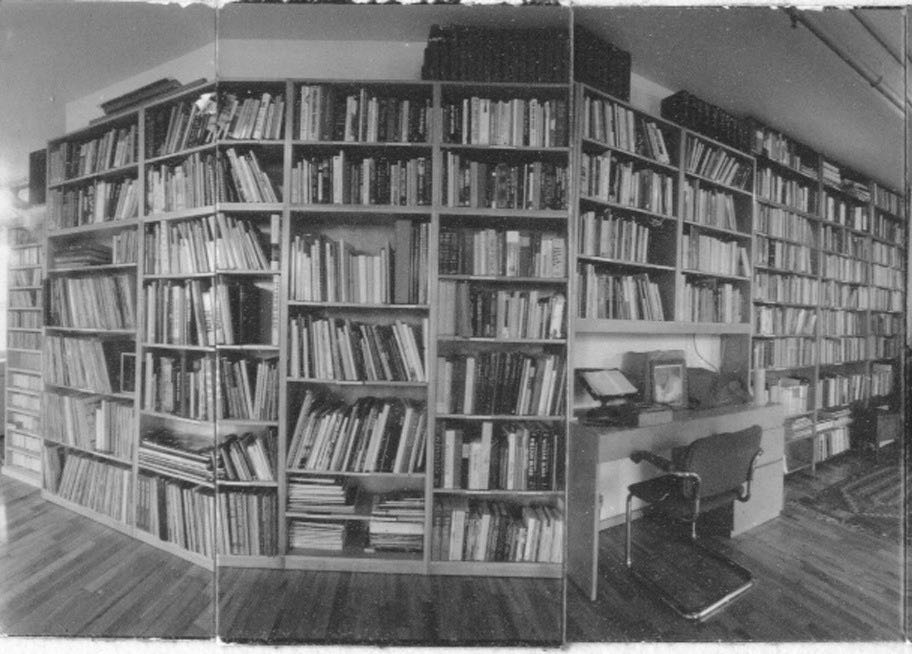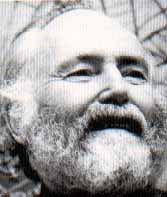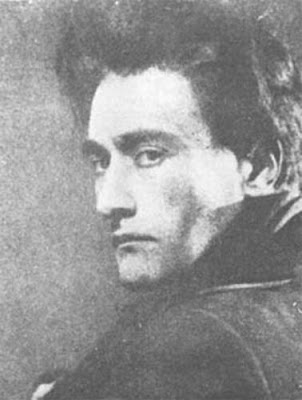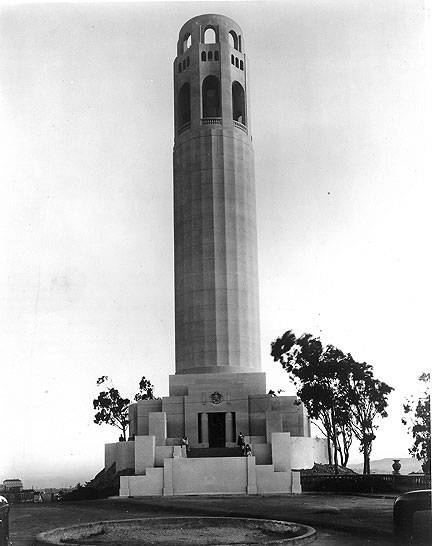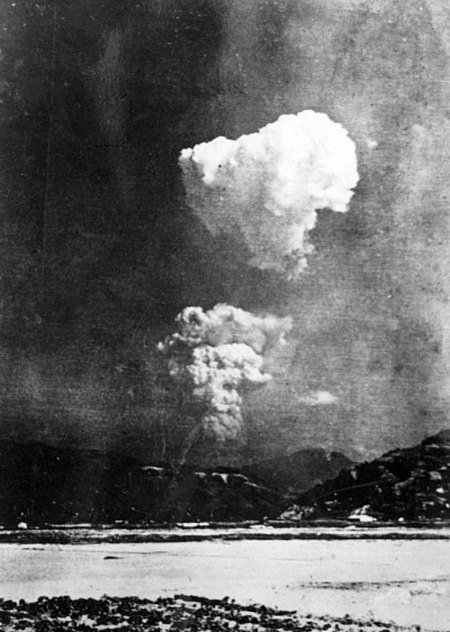
[Anne Waldman - Photograph by Greg Fuchs via AnneWaldman.org]
Student: A lot of Anne (Waldman)’s poems are that way (oracular, rhapsodic) like “Musical Garden”, a breath of fresh air. They can pick you up and just…
Student: A lot of Anne (Waldman)’s poems are that way (oracular, rhapsodic) like “Musical Garden”, a breath of fresh air. They can pick you up and just…
AG: Yeah
Student : ..stanza after stanza, ( with a hook line) - “Can’t give you up”
AG: Yeah
Student: The “Pressure”poem
Student: That’s not all one line, is it?
AG: No, these are separate lines. Same principle, though - a repeated refrain.. The thing is “Pressure” is.. as distinct from other poems of Anne’s.. “Pressure”.. was the first of her magnificent “list poems”.
Student: That’s the “Can’t give you up” poem?
AG: Yeah
Student: “No pressure”..”No way out”
AG: “No way out”. “No exit”. “No way out”
Student: Did she read that the other night?
AG: Yeah – That was the first of her series – [Allen begins to recite Anne Waldman’s poem – “When I/ see you/ climb the walls/ I climb them too/ No way out of the cosmic mudhole!”… “no way out of the telephone booth/ the classroom/ the VW bus, the igloo,,”...”no way out of the 60-story office building./the church, the temple, the mosque/ the Long Island Railroad Station/ the A train the D train, the BMT/ the 9th Street crosstown bus/ the rain, the 10-inch snow piling up/ outside my window...] – Now what’s going on in my head, what’s going on there is – she had this really interesting idea – “No way out”. And then pretty soon, she’s throwing in the whole universe! – So no way out of death, no way out of life, no way out of Naropa Institute, no way out of New York City , no way out of the D train.
Ted Berrigan: Also, in that kind of poem you can get little sequences going, like you get, “no way out of your own house, no way out of the street you live on”, and then you can.. like.. “no way out of the next street, the next street over, the 60-story office building, the helicopter, the moon, the sun, the planets”, and it sounds like you’re doing something, and then you drop that and you just keep going with, “no way out”. Sometimes you’ve got something going here, sometimes you’re just making a further list of things that there’s “no way out” (of). There’s a lot of varieties of things you can do.
Student: But there’s more of a connection, it seems, between what there’s “no way out” of. You can throw in the whole universe and say there’s “no way out” of that, because it’s almost welded to one another, but what about saying, I mean..
AG: I actually want to talk about this. I want everybody to shut up, because I had something to say (and now I have forgot!). This was Anne’s first long list poem, I think, and there is a quality in here which is different from her later list poems. And I think this is among the best of them. I think, in some respects, they get weaker later on, or more mechanical. The thing that’s going on here is that she has a grand conception, a really grand conception – a realization of the claustrophobia of the Universe, and sort of a Buddhist notion of “no way out” in meditation. There’s no way out of what is. So then, what you have is a series of lines, ringing the changes on what is, or what’s in her Universe that she can’t get out of it. And the lines are simple. In other words, they’re not images, in a sense, they’re not Surrealist images., they’re not dense, in a sense, the VW bus, the igloo – that’s pretty funny. In one line, “the VW bus, the igloo..” You’ve got the funny jump. But, then, “the classroom”? – that’s not a poem (or a single) line of a poem – “the classroom” – nothing – except the jumps between one line and the other are so strange, and you can see her mind, moving from place to place in her universe, and you can see what she’s going through, what the sequence of her preoccupations are, and her experiences, so that even if, line by line, there is no Surrealist image orhaiku within the line, the jumps between lines make a funny kind of haiku– “No way out of the cosmic mudhole/ no way out of the telephone booth/ the classroom” – from the telephone booth to the classroom to the VW bus, the igloo - “No way out of the quonset hut/…tea for two” – So the jumps are so weird you actually have a graph of her mind moving (which is Philip Whalen’s phrase), you actually have a graph of her mind moving instant to instant into all these weird particulars of her life . So that, eve though the individual short lines don’t each one present a haiku within it, or some kind of persimmon-jump, or space-gap, or contrast, or image, the action of the poem in moving from thought to thought, preoccupation to preoccupation, takes care of the poetics, in the sense of the surprise, takes care of the poetic surprise, so, even though the lines are dull, taken by themselves, the changes are not dull, and they get funnier and funnier, and, finally, more and more serious, to the point where she actually has – “no way out of Africa/ off Europe, out of Asia/ no way off the jeep,/ the circus, the rodeo/ the Donizetti opera/ (La Fille du Regiment)/ no escape from Joan Sutherland’s astounding voice/ or the barking dogs chasing the weakened deer/ a long winter..” – There’s such vast jumps from one subject to another, and they’re as vast as the mind itself, or as vast as our own experience. So finally it gets to, “the history of Russia, no escape,/ China, Japan/ the history of music, no escape/ the voices of the Pygmies singing in the Ituri rainforest..” (which is, like, a fantastic contrast from “the history of Russia..China, Japan” to “the Pygmies singing in the Ituri rainforest”, and, actually makes a great deal of sense – covering global culture). Then, finally, “no escape from.. ” - “The Great Chain of Being, (no escape), /The Magnetic Field, no escape/ The Continental Shelf, no escape/ The Great Barrier Reef/ no escape, no escape/ The piper cub, no return/ (the next acceptance speech, no return,/ the last hurrah, the middle age)/ no way out of TV, no way off Mars” - All one line - no way out of TV, no way off Mars” - “the moon, the sun’s radiant energy,/ no way, no way/ no way out of structural anthropology..” – The changes are just so brilliant and definite, that, even though from the outside, for a second, it seems jumbled, there’s an inner logic, and when there’s not an inner logic, the jump is so big that in itself it covers the world.
Student: What’s interesting is she said there’s no way out of the poem.
AG: I think she has it somewhere here. There’s no way out of the poem. It’s somewhere here. There’s no way out of the poem, no escape. So that was her, I think, first spontaneous list poem. Now the later poems, I think, are a little more mechanical – like “Fast Speaking Woman”(and I think the changes there.. it’s the same principle) – “I’m the accomplished woman. I’m the woman who drives/ I’m the alabaster woman/ I’m the egregious woman/ I’m the embryo woman…” – Here, she’s beginning to make combinations, which, within themselves, are a little (too) strange to sustain it . It wouldn’t be.. well – “I’m the girl under an old fashioned duress/ I’m a thought woman/ I’m a creator woman/ I’m a waiting woman/ I’m a ready woman/ I’m an atmosphere woman/ I’m the morning star woman/ I’m the heaven woman…” – I find that a little weaker. Because there still is a really strong basic perception, there’s still really a great idea to ring all the changes on what kind of woman (which means, what kind of soul, what kind of person, as well…) - Yes?
Student: I find that…
AG: Well, let me finish my sentence..
Student: I was going to turn it over, so..
AG: ..as well as taking off on the feminist changes. But, at that point, I began feeling that what she needed was to actually begin to get more juxtaposition within the line, to keep the thing moving, that the lines would have to be more dazzling than in the first simple lists of “No Escape” (Pressure) , because the “no escape” had such a central psychological given in it. The I’m-a-blank-woman, I’m-a-blank-woman, is less central, in a sense, psychologically.
Student: Well, it still has that sort of peripheral vision thing of taking it from every view possible that..
AG: Yeah..
Student: .. you could take it from.
AG: But just single words, or little phrases. (And) at that point, I began thinking she needed more. Yes?
Student: One thing I noticed that disturbed me a little bit is that this form is obviously very similar to yours in many ways, and one thing that you do always, when you use this form, it’s always a group…
AG: Yeah, I got it from (Whitman)
Student: …works as a group, whereas this becomes a simple set. It’s the difference between set theory and group theory, and this breaks down into.. you know, set theory.
AG: (I’m not familiar with) set theory
Student: Set theory, yeah in math
AG: Yeah
Student: In Modern Math, they talk about it
AG: I’ve never studied it
Student: Oh. The set theory has the members don’t interact, whereas (in) the group theory the members do interact. I guess that’s the basis.
AG: Okay. If one understood that terminology that would be a helpful way of explaining it, but [Allen turns to the class] how many don’tunderstand (t)his terminology?
Student: I find mathematics pretty formidable
AG: Yeah













